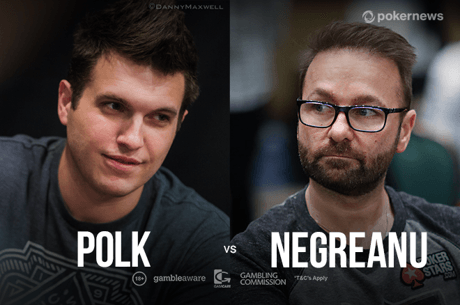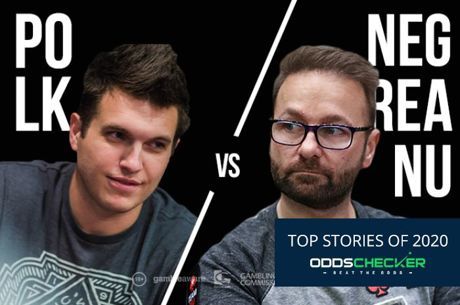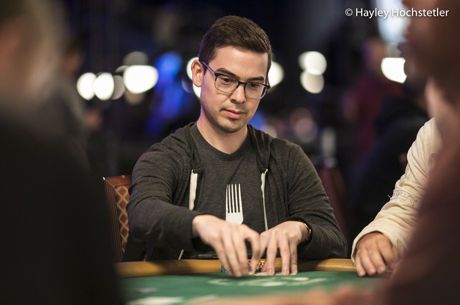Hand Review: Did Polk Shove Too Light for Value Versus Negreanu?
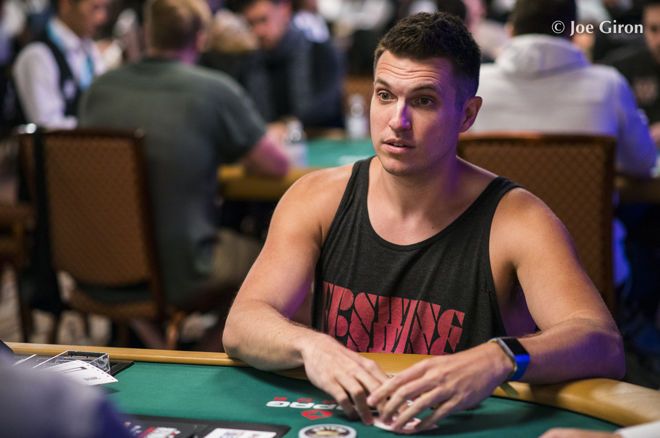
The ongoing $200/$400 heads-up no-limit hold'em match between Doug Polk and Daniel Negreanu has captured the attention of the poker world, particularly with the dearth of other action of interest out there.
Two legends of poker battling back and forth for pots worth sometimes hundreds of thousands of dollars has naturally produced some interesting hands that merit a closer look from a strategic point of view.
Getting an expert's perspective on such a hand isn't easy considering how few HUNL specialists are out there and qualified to comment critically on these stakes, but PokerNews did manage to get hold of one: Kevin Rabichow. The high-stakes pro and Run It Once Poker ambassador graciously agreed to help break down a pot I found fascinating while covering the action.
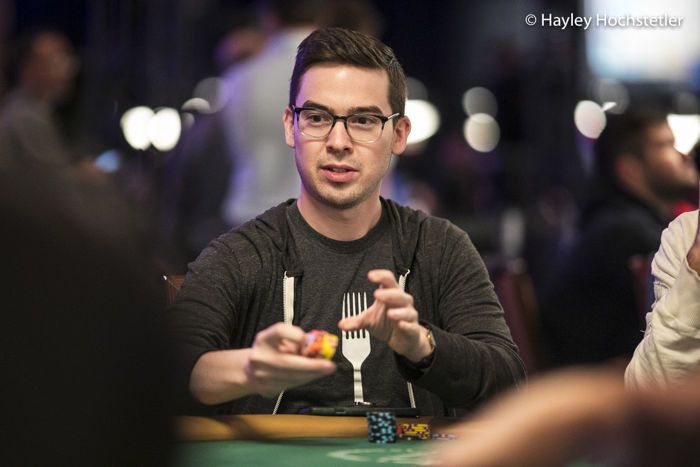
The hand can be viewed here but for those not wishing to relive it in video form, here's how the action goes:
Negreanu raised to $960 on the button and Polk reraised to $3,945. Negreanu four-bet to $10,800 and Polk called, bringing a 6♣5♦K♣ flop. Both players checked and the turn was the K♥. Polk led out $6,479 and Negreanu called. On the 7♠ river, Polk shoved for $32,132. Negreanu quickly called with J♠J♥ and won the showdown against 8♥8♦ to scoop a $98K pot.
PokerNews: How does being 125 bigs deep change preflop strategy with these hands if at all? Is everything they do here standard?
Kevin Rabichow: The interesting decision preflop as you get deeper is how do you adjust what you're going to stack off compared to three-bet-call or just call. Maybe you three-bet less than usual here but I still think this hand's always a three-bet. Sometimes you can five-bet all in for 100 bigs but maybe not 125.
On the flop, we see both players check. I assume that's also pretty standard or is there an argument to bet JxJx because this is a good flop for the four-bettor's range, and aces and queens are potentially bad turns than can cost you a pretty big pot?
It's common for button to bet range on this flop. The key thing is it's king-high. When the board comes king-high, the really important thing in heads-up preflop ranges is that button will have all ace-kings and big blind never has any ace-kings. You can't say that as confidently in other formats but in heads up you can.
Daniel should probably just bet. If Doug folds queen-jack or something with an ace in it, you get some equity out of the pot and can charge a gutshot or open-ended straight draw. I think it's a little non-standard not to bet. If I was gonna check anything, my first choice would be queens or jacks, though. If you're gonna play checks, this hand is up there.
After a K♥ turn, Doug leads one-third of pot. Is this for standard for value and protection?
Doug is very GTO-focused. He's trying to just play well and learn from the solver. The solver wouldn't check very much. 8x8x is the type of hand that wants to lead small. It does depend on what types of hands Daniel is checking back though.
We had seen Daniel occasionally check as strong as top pair in these four-bet pots.
That makes it really tough if he's checking KxXx. What Doug has to ask himself is, 'Is this hand good enough to bet for protection?' Not just does it want to because it clearly does.
Keep in mind stuff like queen-six suited or ace-five suited are preflop bluffs and made a weak pair. That's part of the range that gets overlooked heads up. Daniel's gonna bluff with raggedy QxXx, KxXx. He could have pair of sixes or fives. If he folds out something like Ax10x that has six clean outs, that's also great for him.
It's kind of thin. I think it's still clear the bet is fine.
We see a pot-sized shove on the 7♠ river. I assume it's for value? Is this too thin?
I think on the surface, it's a pretty normal shove in heads up. In this situation, it's a little thin. The key thing here is Doug's out of position. It's a thin value shove for one pot-sized bet, so that makes the math pretty easy. If he was to check and get shoved on he needs 33% to check-call. Traditionally if you make a value-bet, you want to get called by a range you're ahead of. When he shoves and gets called, maybe he's got 43% equity.
It gets weird out of position with these thin, in-between hands. But, he's ahead of Ax6x, Ax5x, AxQx even which might hero. A rivered pair of sevens which is unlikely but maybe a 9x7x hand that bluffed preflop could have gotten here. There's stuff that he beats but it's certainly not thrilling.
But, Doug is someone who bluffs a lot, and Daniel will make hero calls. Maybe Doug doesn't think check performs very well. Maybe he's saying if he has JxJx or QxQx it's a cooler, which I kind of agree with. I think Doug's shoving for value fully expecting to lose more than time.
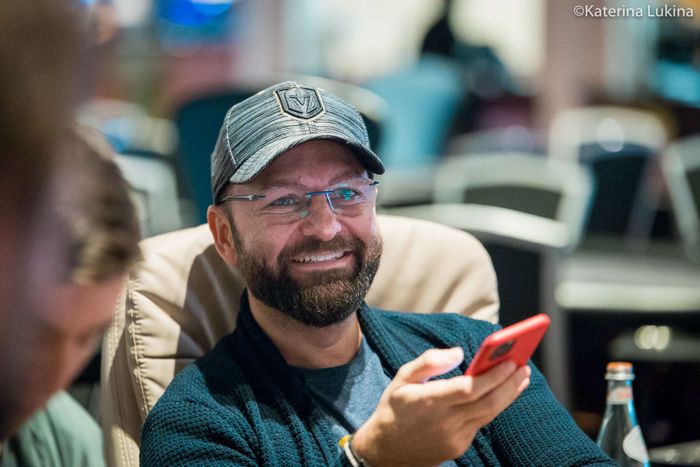
So, even though he might be beat more than half of the time he's called, jam can still be good for value?
You have to look at the [expected value] of check as a whole versus the EV of jam as a whole. If he jams, he always gets called by better hands and sometimes by worse hands. When he checks, Daniel will always check back the hands Doug beats. But, the concern is he will bluff sometimes and he will value-bet all the better hands. If he feels he cannot check-fold, then value-betting becomes worth considering.
Does block-betting the river make any sense?
From what I've seen of Daniel's game, I think block is very likely the best play. That would probably be my first choice. I think it's a good play. It's quite possible Doug randomized for his sizing or just kind of got caught up in making a greedy sizing choice.
Blocking river in a spot like this is definitely part of good strategy. The likely response we're hoping for is Daniel calls with JxJx. If that's the play he takes even a little bit of time, that's an amazing result. We get extra value from fives and sixes and don't lose the max against JxJx and QxQx.
What do regular players need to understand about heads-up no-limit that makes this shove good?
I think the framework within heads-up no-limit is to realize like JxJx and QxQx, even if we think Daniel is conservative, it's not an overwhelming majority of his range. We can't focus so quickly on that part of his range. Because preflop ranges are so wide, it's important to remember that ace-high needs to call the turn and 6xXx and 5xXx need to call river a lot of the time against a jam. Just recognizing that the overall strategy good heads-up no-limit players use in this spot isn't overly focused on the top of Daniel's range. There's all this trash and all these other weak hands.
What parts of heads-up no-limit can fans watching take and try to apply to their own games?
Honestly, it's probably just aggression. Recognizing the value of finding bets and stacking off uncomfortably light. It trickles to the rest of your strategy. The benefit of Doug having plays like this that are thin and look wild is you allow yourself to be aggressive with the bluffs in your range and find thinner value bets as a result. Your aggression goes up and you win more pots.
Almost all players are not aggressive enough, even professional players. Six-max, tournaments...players are by and large not aggressive enough. Here's a player at the top of the game on the biggest stage and he's going after it every pot. That's something worth trying to emulate, I think.
Kevin Rabichow is a high-stakes professional and coach for Run It Once Training. You can check out his personal coaching page here and reach him on Twitter with any questions or comments.

